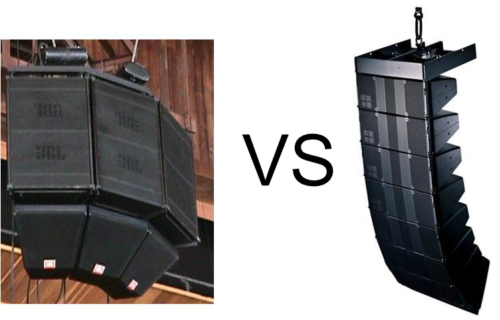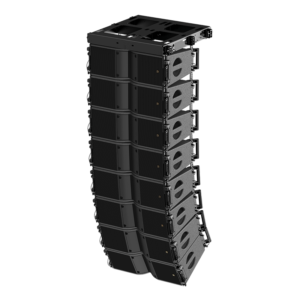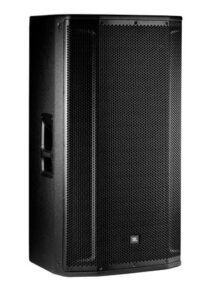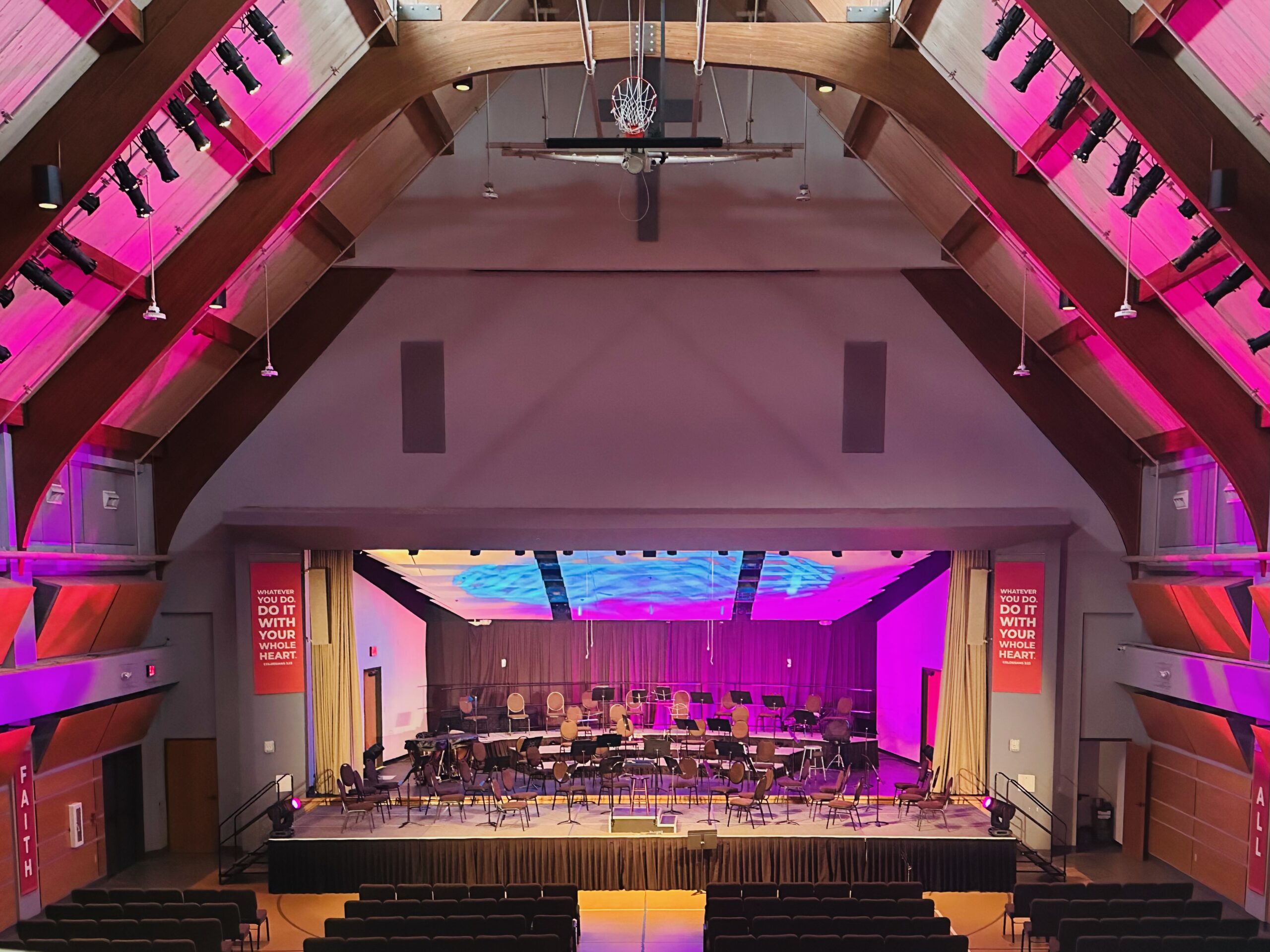

Hello.
Are you looking to upgrade your audio system, and are trying to make a decision about line-arrays speakers or point-source speakers? I bet you want a line-array system because you’ve heard a few, and they sound amazing. Or maybe your friend told you about L’Acoustics or D&B, and you would just love to have one in your venue. Can I say before you buy anything that you should take the time to understand what the difference between the two speaker systems is, and why you should make sure you’re getting the right system for your space, and not just by price or brand.
1. What is a Line Array speaker system?
A line array is a loudspeaker system made up of identically shaped elements arranged in a vertical configuration or hang.
Fundamentally, a line array is a speaker system that is designed to control the direction of sound, which is done by manipulating the size, shape, and angle of the array.
Modifying the array’s size, shape, and angle makes it possible to direct the sound where it is needed to the audience and away from areas where it can cause unwanted reflections or echoes.
The whole point of a line array is to ensure that everyone in the audience, whether in the front row or at the back of the venue, hears the same quality of sound. It’s all about creating a uniformly distributed sound.

2. The Pros and Cons of a Line Array
The Pros
Line array speakers have several advantages that make them popular for big venues and events.
- Superb Sound Quality: The principle of constructive interference used in line array speakers results in a louder and clearer sound, even over long distances.
- Versatility and Scalability: Whether you’re hosting a large-scale concert or a small indoor event, line arrays can be easily scaled up or down by adding or removing speaker units to suit the venue’s size.
- Controlled Dispersion: The vertical arrangement of speakers in a line array allows the sound to be directed more effectively towards the audience, reducing echo and enhancing overall sound quality.
- Greater Coverage: The ‘J’ Array configuration is especially helpful in ensuring a balanced audio experience for an audience spread over a large area, providing greater coverage.
The Cons
Line arrays are good, but there are also some challenges to using line array speakers.
- Complex Setup: The setup and programming of a line array system require technical knowledge and experience. Incorrect configuration can lead to poor sound quality.
- Cost: Line arrays are expensive, especially high-quality systems. The cost might deter smaller events or venues with limited budgets.
- Heavy and Bulky: Line array systems are often large and heavy, making them less suitable for venues with limited space or weight-bearing capacity.
The superior sound quality, versatility, and control over sound dispersion that line arrays offer make them a worthwhile investment. But, as with all audio equipment, it’s important to understand your specific requirements and constraints before deciding.
3. What is a Point-Source Speaker?
A point-source speaker, in general, is a single loudspeaker enclosure, driven by a single source. True point-source loudspeakers place the tweeter in the center of the woofer (as opposed to centrally mounting the tweeter in front of the woofer), ensuring that sound waves produced by the tweeter and woofer are time aligned and reach the listener’s ears at the same time and from the same direction. They create a more natural and coherent sound, closer to how we experience sound in real life.
A point-source loudspeaker maintains a symmetrical dispersion horizontally and vertically but also phase coherence throughout the frequency band, including the critical crossover region to the low-frequency woofer. In addition, the high efficiency of the tweeter reduces power compression to give an exceptional transient response. Point-source loudspeakers can take many forms, the most popular being in-ceiling, surface mount and pendent.

4. The Pros and Cons of Point-Source
The Pros
With recent developments and improvements in drivers, digital signal processing (DSP), and improvements in enclosure design, point source speakers have grown in popularity and usage.
- Easy to setup: Point source speakers to be a little more versatile than line array speakers, allowing for just one person to set them up in most cases.
- Portable: When dealing with a mobile situation, point source speakers to be the better option as they’re easier to move from one place to another.
- Wide sound coverage: Point source speakers are great for small to medium size venues because a single speaker can cover a much larger area.
- Cost Effective: Because of the make-up of a point source speaker, which generally has less components and can be made with a lighter material, they tend to come at a much lower price point than their line array counter-part..
The Cons
Line arrays are good, but there are also some challenges to using line array speakers.
- Low SPL: In general, most point source speakers cannot handle high sound pressure levels
- Fidelity: Point source speakers may not provide the same fidelity as line arrays in acoustically complex rooms.
Point-source loudspeakers are often used individually: a single loudspeaker or multiple loudspeakers spaced apart to provide the full range of the sound spectrum from a single point. Each unit acts as a separate, independent sound transducer, but they can often be used together to provide effective sound coverage.
4. Choosing the right system
More often than not, especially, in small churches or organizations, the person trying to figure out the AV budget doesn’t have a background in the audio-visual industry. Even if they have some experience with some equipment, the plethora of speaker solutions that exist can be mind-boggling. Even AV integrators have to specialize in certain equipment and sections of the AV industry, so that they’re very good at what they do because the field is so big. And with that, you should find a proven AV partner, and work with them to build a relationship where you can lean on their expertise.
As you try to determine your speaker needs for your organization, some considerations should be taken.
- Evaluate the physical parameters of your venue, the number of seats, and the architectural features of the venue that affect sound reflection.
- Point source systems are easier to set up and install in smaller venues, and their coverage will be sufficient for small audiences and medium-sized halls.
- For rooms with odd layouts, complex acoustics such as those prone to excessive reflections or echoes, or irregular seating arrangements, individual loudspeakers are easier to position and set up. They provide the right vector of sound in exactly the right direction.
- If you are planning large events where you need to deliver clear, focused, loud sound to remote seating areas, line array loudspeakers are the obvious choice.
In the end, due diligence is what’s required to acquire the necessary information to determine what would be best for your venue.



